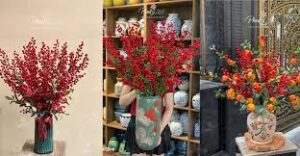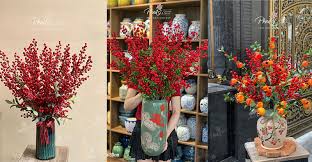Organizing an Exhibition Event for Sato Cymbidium Orchids: A Comprehensive Guide

Sato Cymbidium orchids, known for their stunning beauty and vibrant colors, are a popular choice for floral exhibitions and events worldwide. Organizing an exhibition for these exquisite flowers requires meticulous planning, creativity, and attention to detail to ensure a memorable experience for both exhibitors and visitors. In this first part of the guide, we will explore the essential steps and considerations involved in organizing a successful Sato Cymbidium orchid exhibition, from initial planning to logistics and marketing strategies.
## 1. Defining the Purpose of the Exhibition
Before diving into the logistics of organizing an exhibition, it is crucial to define the primary purpose of the event. The goals may vary based on the context of the exhibition, including:
### 1.1 Celebrating Orchid Diversity
One of the primary purposes of an exhibition could be to celebrate the diversity of Sato Cymbidium orchids. This includes showcasing various hybrids, colors, and forms, and educating the public about their unique characteristics.
### 1.2 Promoting Local Growers
Another goal might be to promote local growers and breeders. By featuring their orchids, the exhibition can help connect growers with potential customers and enthusiasts, fostering a sense of community within the orchid-growing industry.
### 1.3 Raising Awareness and Education
Exhibitions can also serve as educational platforms to raise awareness about Sato Cymbidium orchids and their conservation. Hosting workshops, talks, and informational displays can engage visitors and promote appreciation for these beautiful flowers.
### 1.4 Fundraising and Support
In some cases, the exhibition may aim to raise funds for a specific cause, such as supporting orchid conservation efforts or local horticultural societies. Clearly defining this goal will help shape the overall event strategy.
## 2. Formulating a Planning Committee
Once the purpose of the exhibition is established, it is time to assemble a dedicated planning committee. This team will be responsible for overseeing the event’s logistics, marketing, and execution.
### 2.1 Roles and Responsibilities
Assigning clear roles within the committee can streamline the planning process. Consider the following positions:
– **Event Coordinator:** Responsible for overall event management, including scheduling, venue selection, and coordination with other team members.
– **Marketing and Promotion Manager:** Develops and implements marketing strategies to promote the exhibition, including social media, flyers, and press releases.
– **Logistics Coordinator:** Manages all logistical aspects, such as venue setup, transportation of orchids, and technical requirements.
– **Education and Program Director:** Plans workshops, talks, and educational displays to engage visitors and enhance their experience.
– **Sponsorship and Fundraising Coordinator:** Secures sponsorships and manages fundraising efforts to support the exhibition.
### 2.2 Regular Meetings
Schedule regular meetings to discuss progress, address challenges, and brainstorm ideas. Effective communication within the committee is essential for a successful event.
## 3. Selecting a Venue
The choice of venue plays a significant role in the overall success of the exhibition. Consider the following factors when selecting a location:
### 3.1 Space Requirements
Ensure the venue has sufficient space to accommodate the orchids, exhibitors, and visitors comfortably. A well-designed layout will facilitate traffic flow and allow visitors to engage with the displays effectively.
### 3.2 Accessibility
Choose a venue that is easily accessible for all visitors, including those with disabilities. Consider factors such as parking availability, public transportation options, and clear signage.
### 3.3 Amenities
Check for essential amenities, including restrooms, electrical outlets, and internet connectivity. Depending on the exhibition’s scale, you may also need access to catering services or food vendors.
### 3.4 Ambiance
The ambiance of the venue can significantly impact visitors’ experiences. Look for a space that aligns with the exhibition’s theme, whether it’s a botanical garden, community center, or an art gallery.
## 4. Developing an Exhibition Layout
Creating a thoughtful exhibition layout is crucial for ensuring a visually appealing and engaging experience for visitors.
### 4.1 Design and Flow
Consider how the displays will be arranged to guide visitors through the exhibition. Create pathways that encourage exploration while minimizing congestion. A clear flow will help visitors appreciate each display and prevent them from feeling overwhelmed.
### 4.2 Display Areas
Designate specific areas for various types of displays, including:
– **Showcase Areas:** Highlight the best specimens of Sato Cymbidium orchids, including award-winning hybrids or rare varieties.
– **Educational Stations:** Set up interactive stations where visitors can learn about the cultivation, care, and significance of Sato Cymbidium orchids.
– **Vendor Booths:** Allocate space for local growers and vendors to showcase and sell their orchids and related products.
### 4.3 Signage and Information
Incorporate clear signage throughout the exhibition to guide visitors and provide information about each display. Include educational materials, such as brochures or digital displays, to enhance the visitor experience.
## 5. Curating the Orchid Collection
Curating the collection of Sato Cymbidium orchids is one of the most exciting aspects of organizing the exhibition.
### 5.1 Sourcing Orchids
Reach out to local growers, orchid societies, and breeders to source a diverse range of Sato Cymbidium orchids. Consider incorporating both well-known varieties and rare hybrids to captivate visitors.
### 5.2 Quality Control
Ensure that the orchids selected for the exhibition are healthy and vibrant. Conduct inspections before the event to identify any plants that may need special care or replacement.
### 5.3 Display Techniques
Consider using different display techniques to enhance the visual appeal of the orchids. Options include:
– **Hanging Displays:** Create an eye-catching display by hanging orchids at varying heights, allowing visitors to appreciate their beauty from multiple angles.
– **Themed Arrangements:** Group orchids by color, size, or hybrid to create themed displays that tell a story or evoke a specific atmosphere.
– **Interactive Displays:** Encourage visitor engagement by allowing them to interact with the orchids, such as touch-and-feel stations or guided tours.
## 6. Logistics and Transportation
Proper logistical planning is vital for ensuring the smooth transportation and setup of Sato Cymbidium orchids at the exhibition.
### 6.1 Transportation
Coordinate transportation logistics to ensure that orchids arrive at the venue safely. Consider the following factors:
– **Timing:** Schedule transportation to allow ample time for setup before the exhibition opens.
– **Packaging:** Use appropriate packaging materials to protect the orchids during transit, such as padded boxes or crates.
– **Climate Control:** Ensure that transportation vehicles are climate-controlled to maintain optimal temperatures and humidity levels.
### 6.2 Setup and Dismantling
Plan the setup and dismantling process carefully to minimize stress on the orchids. Consider the following:
– **Setup Schedule:** Create a detailed setup schedule that outlines when each display will be set up and by whom.
– **Dismantling Plan:** Develop a plan for the safe dismantling and transportation of the orchids after the exhibition concludes.
## 7. Marketing and Promotion
Effective marketing and promotion strategies are essential for attracting visitors to the exhibition.
### 7.1 Target Audience
Identify the target audience for the exhibition, which may include orchid enthusiasts, gardening clubs, families, schools, and the general public. Tailor marketing messages to resonate with each group.
### 7.2 Promotional Materials
Create promotional materials, such as flyers, posters, and social media graphics, to generate buzz about the exhibition. Highlight key features, such as special events, guest speakers, and educational workshops.
### 7.3 Online Marketing
Utilize online platforms to promote the exhibition, including:
– **Social Media:** Create event pages on platforms like Facebook and Instagram to share updates, sneak peeks, and engage with potential visitors.
– **Email Newsletters:** Send out newsletters to your mailing list, providing information about the exhibition, ticket sales, and special events.
– **Event Listings:** Submit the exhibition details to local event listings and community calendars to reach a wider audience.
## Conclusion
In this first part of our guide to organizing a Sato Cymbidium orchid exhibition, we have covered the foundational elements needed to plan a successful event. From defining the purpose and assembling a planning committee to selecting a venue and curating the orchid collection, each step is crucial in creating an engaging experience for visitors.
In the next part, we will explore more aspects of the exhibition, including the implementation of educational programs, visitor engagement strategies, and post-event evaluations to ensure continued success in future exhibitions. By understanding the intricacies of organizing an orchid exhibition, we can celebrate the beauty and diversity of Sato Cymbidium orchids while fostering a greater appreciation for these stunning flowers in our communities.
# Organizing an Exhibition Event for Sato Cymbidium Orchids: A Comprehensive Guide (Part 2)
In the first part of our guide, we explored the foundational steps required to organize a successful exhibition for Sato Cymbidium orchids, including defining the purpose, assembling a planning committee, selecting a venue, developing the exhibition layout, curating the orchid collection, logistics, and marketing strategies. In this second part, we will delve into the implementation of educational programs, visitor engagement strategies, post-event evaluations, and tips for ensuring the event is a memorable experience for all attendees.
## 8. Implementing Educational Programs
One of the key components of a successful exhibition is providing educational opportunities for visitors. Engaging educational programs can enhance the overall experience and foster a deeper appreciation for Sato Cymbidium orchids.
### 8.1 Workshops and Demonstrations
Organize workshops and demonstrations that cater to various levels of experience, from beginners to seasoned orchid enthusiasts. Consider offering the following:
– **Orchid Care Workshops:** Provide hands-on sessions where participants learn about the specific care requirements for Sato Cymbidium orchids, including watering, fertilizing, and repotting techniques.
– **Propagation Demonstrations:** Showcase the propagation process, demonstrating how to create new plants from existing ones. This can be particularly appealing to those interested in expanding their orchid collections.
– **Arranging Orchids:** Host sessions on how to arrange orchids for display, including tips on selecting complementary plants and designing aesthetically pleasing arrangements.
### 8.2 Guest Speakers
Invite guest speakers who are experts in the field of orchid cultivation and care. They can share their knowledge on various topics, including:
– **The History of Sato Cymbidium Orchids:** Discuss the origins and development of this orchid variety, highlighting its significance in horticulture.
– **Conservation Efforts:** Present on the importance of orchid conservation and how individuals can contribute to preserving these beautiful plants in the wild.
– **Trends in Orchid Breeding:** Explore the latest trends in hybridization and breeding, showcasing exciting new varieties of Sato Cymbidium orchids.
### 8.3 Informational Displays
Set up informational displays throughout the exhibition to provide visitors with valuable insights into Sato Cymbidium orchids. Consider the following topics for displays:
– **Species Profiles:** Create profiles for various Sato Cymbidium species, detailing their unique characteristics, growth requirements, and origins.
– **Care Guides:** Provide easy-to-understand care guides that visitors can take home, summarizing the key points for maintaining healthy orchids.
– **Interactive Quizzes:** Engage visitors with interactive quizzes that test their knowledge about Sato Cymbidium orchids, offering small prizes for correct answers to encourage participation.
## 9. Visitor Engagement Strategies
Engaging visitors throughout the exhibition is vital for creating a memorable experience. Utilize a variety of strategies to keep attendees involved and excited.
### 9.1 Guided Tours
Offer guided tours of the exhibition, led by knowledgeable staff or volunteers. These tours can provide in-depth information about the displayed orchids, as well as tips on care and cultivation. Consider the following elements:
– **Themed Tours:** Create different tour themes, such as “Orchid History” or “Hybridization Wonders,” to cater to various interests.
– **Q&A Sessions:** Allow time for attendees to ask questions during the tour, fostering an interactive environment.
### 9.2 Interactive Stations
Set up interactive stations that encourage hands-on participation. Ideas include:
– **Touch-and-Feel Displays:** Provide samples of different orchid textures, such as leaves, blooms, and roots, allowing visitors to engage with the plants physically.
– **Pollination Simulation:** Create a station where visitors can simulate the pollination process, helping them understand this critical aspect of orchid reproduction.
### 9.3 Contests and Prizes
Consider hosting contests during the exhibition to encourage visitor participation. Some ideas include:
– **Best Photo Contest:** Invite visitors to take and submit photos of their favorite orchids from the exhibition, with prizes for the top entries.
– **Scavenger Hunt:** Create a scavenger hunt with clues related to the exhibition, encouraging attendees to explore the displays in search of answers.
### 9.4 Feedback Opportunities
Provide opportunities for visitors to offer feedback about their experience. This can be done through:
– **Surveys:** Distribute surveys at the exit to gather insights into what visitors enjoyed and what could be improved for future events.
– **Suggestion Boxes:** Set up suggestion boxes throughout the exhibition for anonymous feedback.
## 10. Post-Event Evaluation
Once the exhibition concludes, conducting a thorough post-event evaluation is crucial for understanding its success and areas for improvement.
### 10.1 Debriefing Meeting
Hold a debriefing meeting with the planning committee to discuss the exhibition’s outcomes. Consider the following discussion points:
– **Attendance Figures:** Analyze the number of visitors compared to expectations and previous events.
– **Feedback Analysis:** Review feedback gathered from attendees to identify trends and common themes.
– **Financial Assessment:** Evaluate the financial aspects of the event, including expenses, sponsorships, and ticket sales, to determine profitability.
### 10.2 Success Stories and Challenges
Document both the successes and challenges encountered during the exhibition. This documentation will serve as a valuable reference for future events, helping the planning committee build on successful strategies while addressing any shortcomings.
### 10.3 Follow-Up Communication
Send out thank-you communications to exhibitors, speakers, sponsors, and volunteers. Acknowledging their contributions is essential for building lasting relationships and encouraging future collaboration.
## 11. Marketing the Exhibition
Effective marketing strategies play a critical role in ensuring the success of the exhibition. In addition to initial promotional efforts, ongoing marketing throughout the event can help sustain interest.
### 11.1 Social Media Engagement
Continue engaging with attendees on social media platforms during and after the exhibition. Ideas include:
– **Live Updates:** Share live updates and highlights from the exhibition, showcasing unique displays and activities.
– **Visitor Testimonials:** Post testimonials and photos shared by attendees, creating a sense of community and excitement.
### 11.2 Post-Event Recap
Create a post-event recap to share with attendees and your broader audience. This can include:
– **Photo Gallery:** Compile a gallery of images capturing the exhibition highlights, including stunning displays and enthusiastic participants.
– **Event Summary:** Provide a summary of key takeaways, educational programs, and memorable moments from the event.
## 12. Sustainability Considerations
As environmental awareness continues to grow, incorporating sustainable practices into the exhibition can resonate positively with visitors and participants.
### 12.1 Eco-Friendly Materials
Use eco-friendly materials for promotional items, signage, and educational materials. Consider digital options, such as QR codes, to reduce paper waste.
### 12.2 Waste Management
Implement a waste management plan that encourages recycling and composting during the exhibition. Clearly label bins to guide visitors on proper disposal methods.
### 12.3 Promote Sustainability
Highlight any sustainable practices adopted during the event, such as sourcing orchids from local growers or using biodegradable materials. This transparency can enhance your reputation and align with environmentally conscious attendees.
## 13. Building a Community of Orchid Enthusiasts
One of the long-term benefits of organizing an exhibition is the opportunity to build a community of orchid enthusiasts.
### 13.1 Networking Opportunities
Facilitate networking opportunities for attendees, exhibitors, and speakers. Consider providing designated areas for casual conversations and exchanges of ideas.
### 13.2 Online Community
Create an online community or forum for attendees to continue discussions about Sato Cymbidium orchids. This can be a valuable resource for sharing experiences, tips, and upcoming events.
### 13.3 Future Events
Leverage the success of the current exhibition to plan future events. Consider hosting annual or semi-annual exhibitions to keep the momentum going and further engage the orchid community.
## 14. Conclusion
Organizing a successful exhibition for Sato Cymbidium orchids involves meticulous planning, creativity, and a commitment to delivering an engaging experience for attendees. By implementing educational programs, fostering visitor engagement, conducting post-event evaluations, and promoting sustainability, organizers can create an event that not only showcases the beauty of these exquisite flowers but also builds a community of passionate orchid enthusiasts.
The journey of organizing an exhibition extends beyond the event itself; it is an opportunity to celebrate the rich history, diversity, and significance of Sato Cymbidium orchids while educating and inspiring visitors. With careful attention to detail and a focus on creating memorable experiences, organizers can leave a lasting impact on attendees and the broader orchid community.


